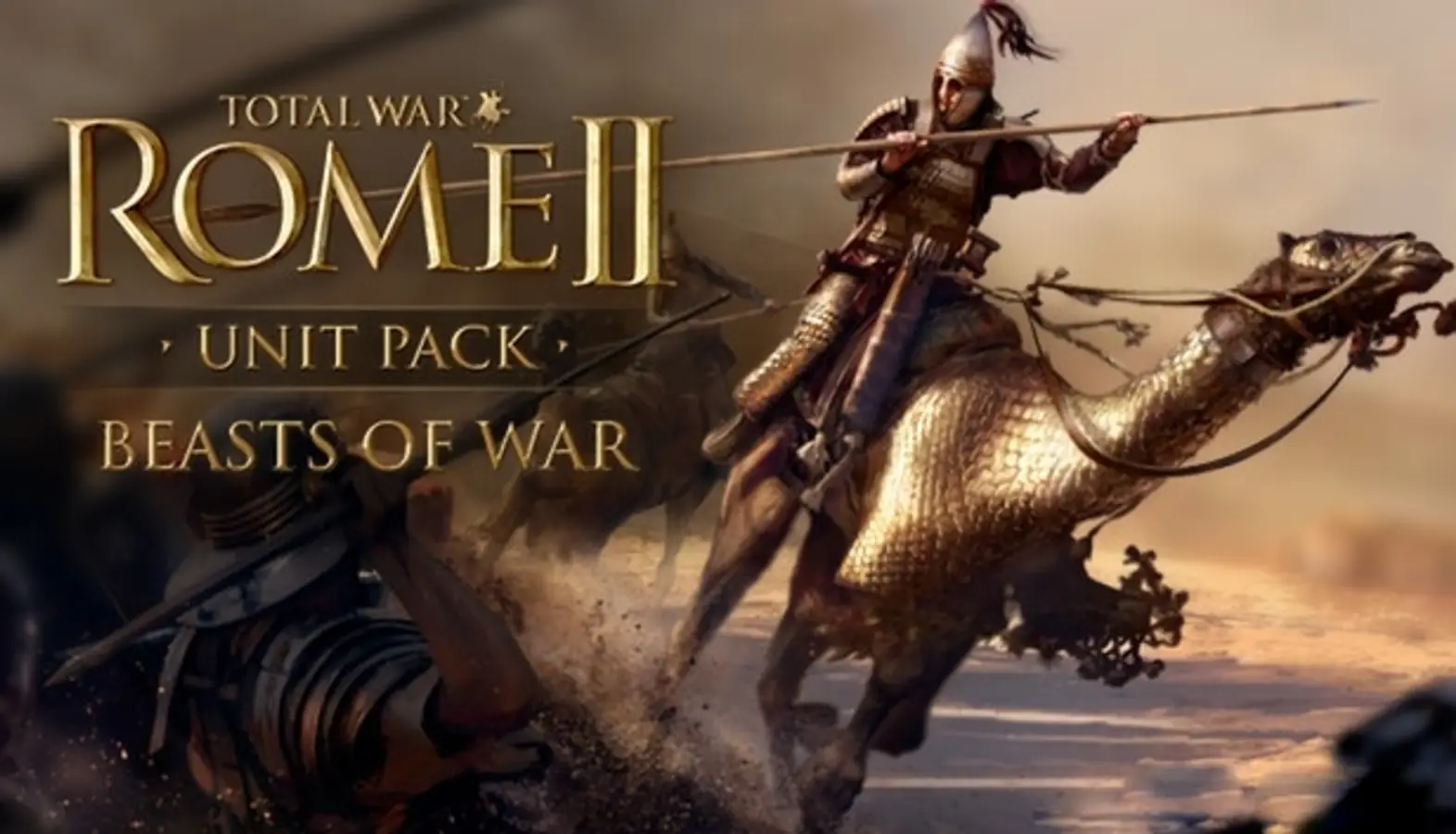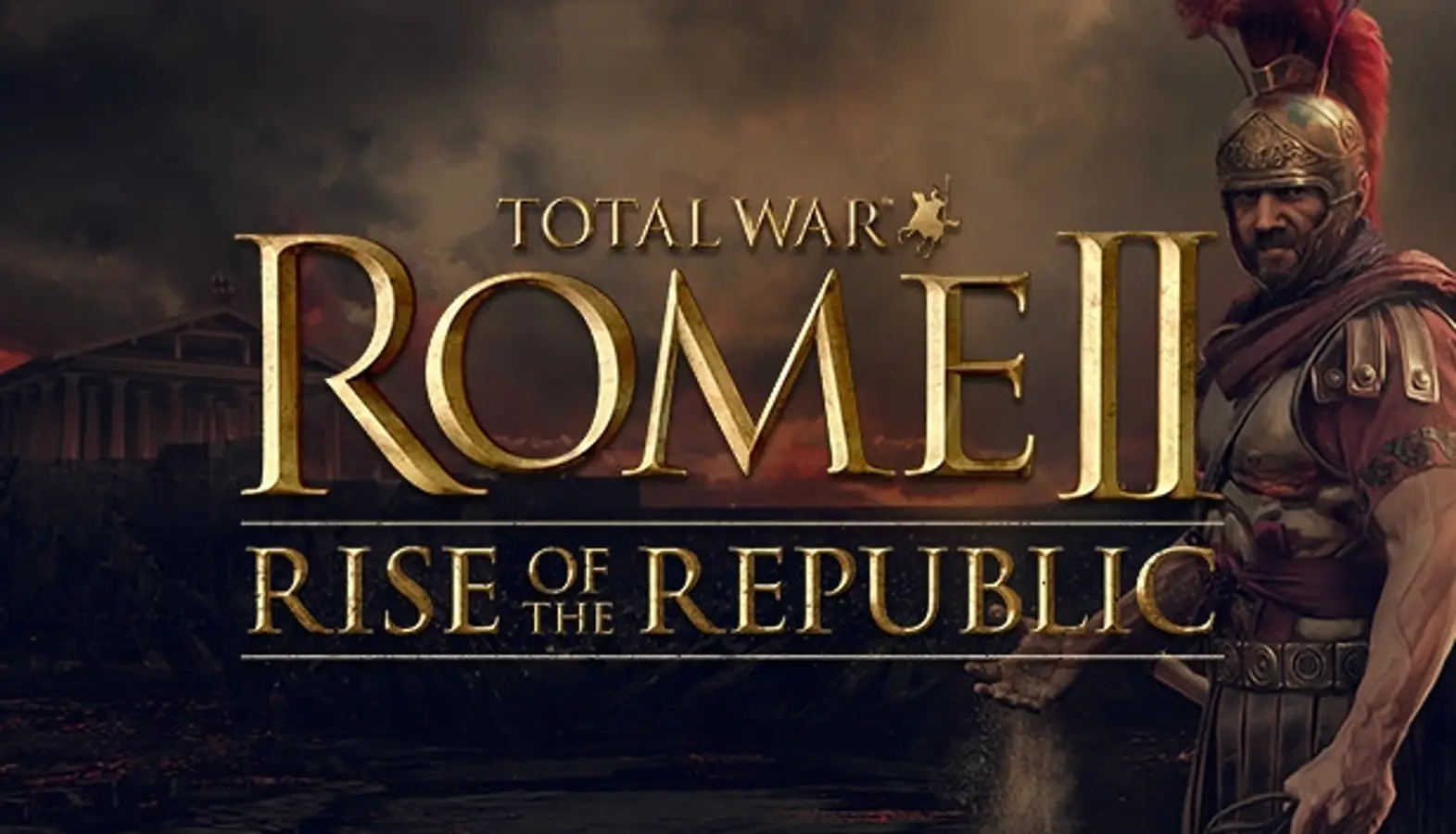Total War Rome II - Beasts of War Unit Pack DLC DLC - (PC) Steam EUROPE Digital Key
Total War: ROME II – Beasts of War
Marshall your savagery, and strike primal fear into the hearts of your enemies
with the Beasts of War unit pack for ROME II. Comprising seven new battlefield
units, Beasts of War brings further variety to ROME II’s already diverse unit
roster.
Terrorise your enemies and slow their progress with beehive, scorpion and
snake-pot ballistas, or crush them under the weight of heavily-armoured
Cataphract Camels and Mercenary Syrian Armoured Elephants. And when their will
is broken and they flee the field, run them down with two new breeds of
ferocious war-dogs.
Beasts of War brings introduces the following recruitable units to ROME II:
• Molossian Dogs
Can be recruited by: Epirus
A heavily muscled beast from western Greece, the now-extinct Molossian is
considered to be the predecessor of many of today’s larger breeds, such as the
Rottweiler and Great Dane. Used as both a guard dog and in battle, Virgil
remarked “never, with them on guard, need you fear for your stalls a midnight
thief, or onslaught of wolves, or Iberian brigands at your back.” These vicious
dogs do not tire easily, and never lose the scent of an enemy.
• Beehive Onager
Can be recruited by: Athens, Epirus, Macedon, Sparta, and Syracuse
Whilst large-scale beekeeping for agricultural purposes was a later innovation,
the humble honeybee nevertheless held an important place in ancient Greek
culture. A trio of mythical nymphs, the Thriae or ‘bee maidens’, were loved by
Apollo and Poseidon, bearing their children. Bees also have a practical
application in battle, as a swarm of angry bees will always cause troops to
stall and panic.
• Scorpion Pot Ballista
Can be recruited by: Pontus, Parthia
Home to the most lethal scorpions in the known world, whose sting can paralyse
and kill a man within an hour, it was only a matter of time before a wily Middle
Eastern general used them against his enemies. Spare a thought, then, for the
Roman emperor Severus; whilst besieging the Parthian city of Hatra, his army was
showered with pots of scorpions from atop the city walls. Like Trajan before
him, Severus failed to breach the defences, even after two attempts.
• Snake Pot Ballista
Can be recruited by: Carthage
Perhaps the most famous use of potted animals was Hannibal Barca’s tactic
against the fleets of Eumenes II of Pergamon. Hurling large clay pots full of
venomous snakes onto the decks of Eumenes’ ships; he panicked the enemy fleet
and won the day. Any unit struck by writhing, venomous snakes will pause to
consider the wisdom of marching onwards!
• Camel Cataphracts
Can be recruited by: Parthia
The Roman general Macrinus was not noted for his experience, although had
another fought the Battle of Nisbis in 217 AD, it’s hard to imagine he’d be any
less stunned by the Parthian cataphract camels fielded that day. Wearing coats
of tough, yet flexible, scale-mail, they made an awesome and terrifying sight as
they punched through the frontlines and spooked the Roman horses with their
camels’ earthy stench.
• Celtic Warhounds
Can be recruited by: Iceni, Cantiaci, Caledones, Demetae, Dunmonii, Brigantes,
and Ebdani
Dogs have always been useful for guard, patrol and scout work. With skilled
handlers they can also be used effectively on the battlefield. Attack dogs were
specifically bred and trained to ignore the noise and chaos of combat. The
Celtic tribes of the late Iron Age put them to great use. Their speed and
ferocity made them ideal shock-troops, and perfect for running down fleeing
stragglers.
• Mercenary Syrian Armoured Elephants
Can be hired as mercenaries in: Dura, Antioch, Tyros, and Palmeira
Indian elephants first came to the Middle East when Seleucus, one of Alexander
the Great’s Successors, invaded India in 305 BC. 500 war elephants were handed
over as part of the peace treaty between the Seleucid dynasty and the Mauryans
of India, and the Seleucids went on to breed many more from this initial stock.
War elephants remained an important part of the Seleucid army until their defeat
by the Romans at Magnesia in 190 BC, following which they were forbidden from
breeding more.
• Wolf Warriors
In the Germanic world, the cult of Wodenaz was so large that people of the age
often had wolf-related names, such as Vulfolaic ("Wolf-dancer"), Wolfhetan
("Wolf-hide"), and Wolfdregil ("Wolf-runner"). Wolfgang, or "Wolf-gait", has
remained a popular German name to this day. The Wolf Warriors, available to the
Suebi and as mercenaries for holders of any province in Germania, drape
themselves in wolf-hides and fight with the spirit of Wodenaz.
• Sobek Cultists
Defender of the Nile and protector of Pharaoh's power, Sobek was the
crocodile-headed god of ancient Egypt from the Old Kingdom period through to the
Ptolemaic dynasty and beyond. As such, crocodiles were venerated for their
violent, primal qualities, and were even bred on temple sites as a living
personifications of the god, and mummified when they died. With





